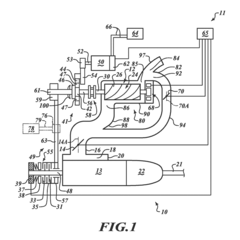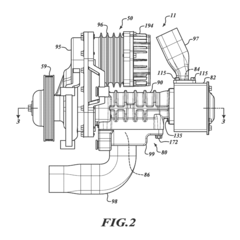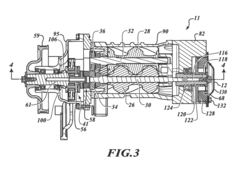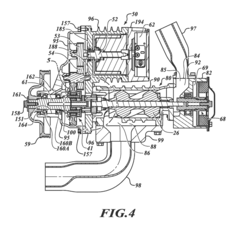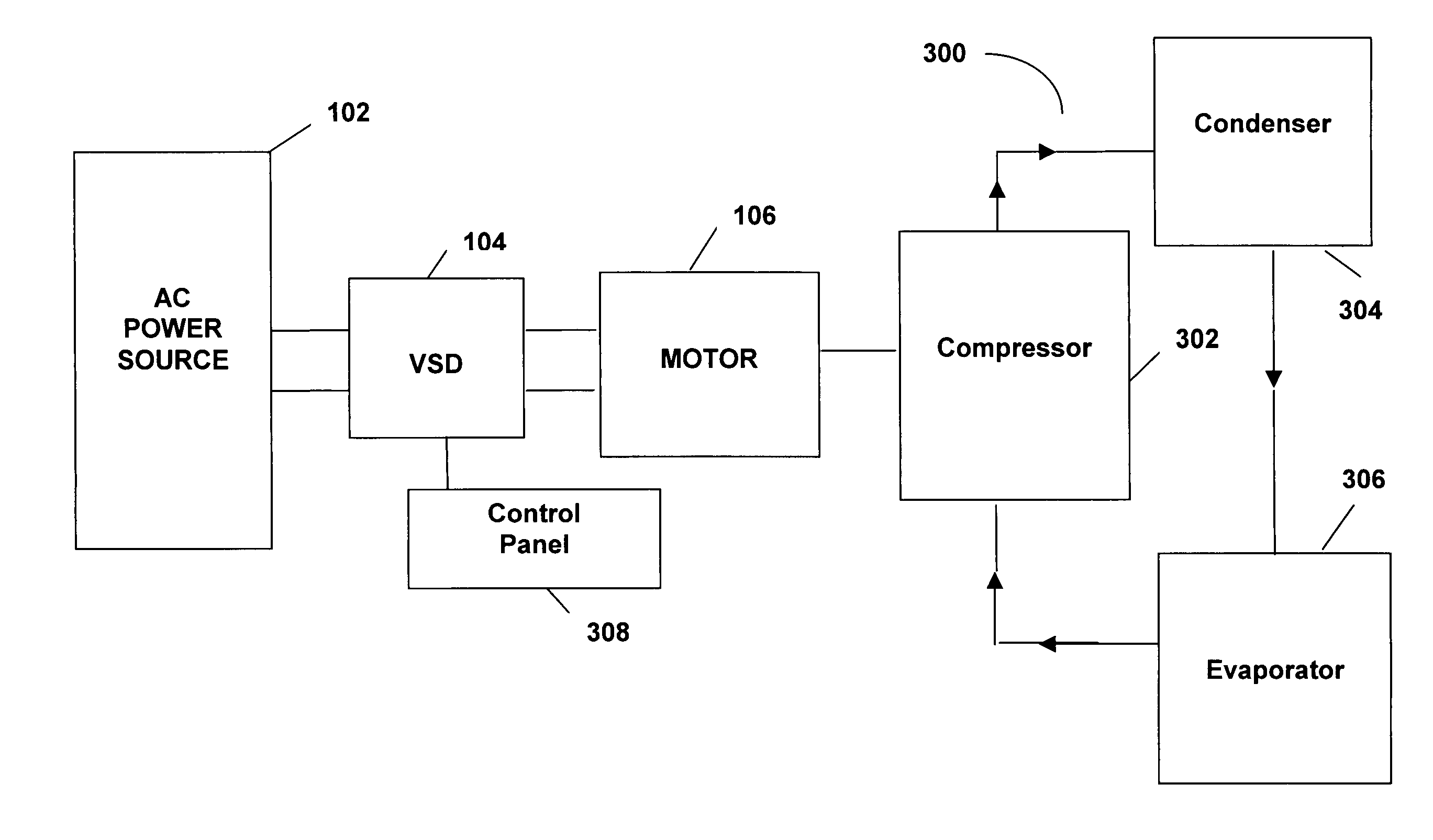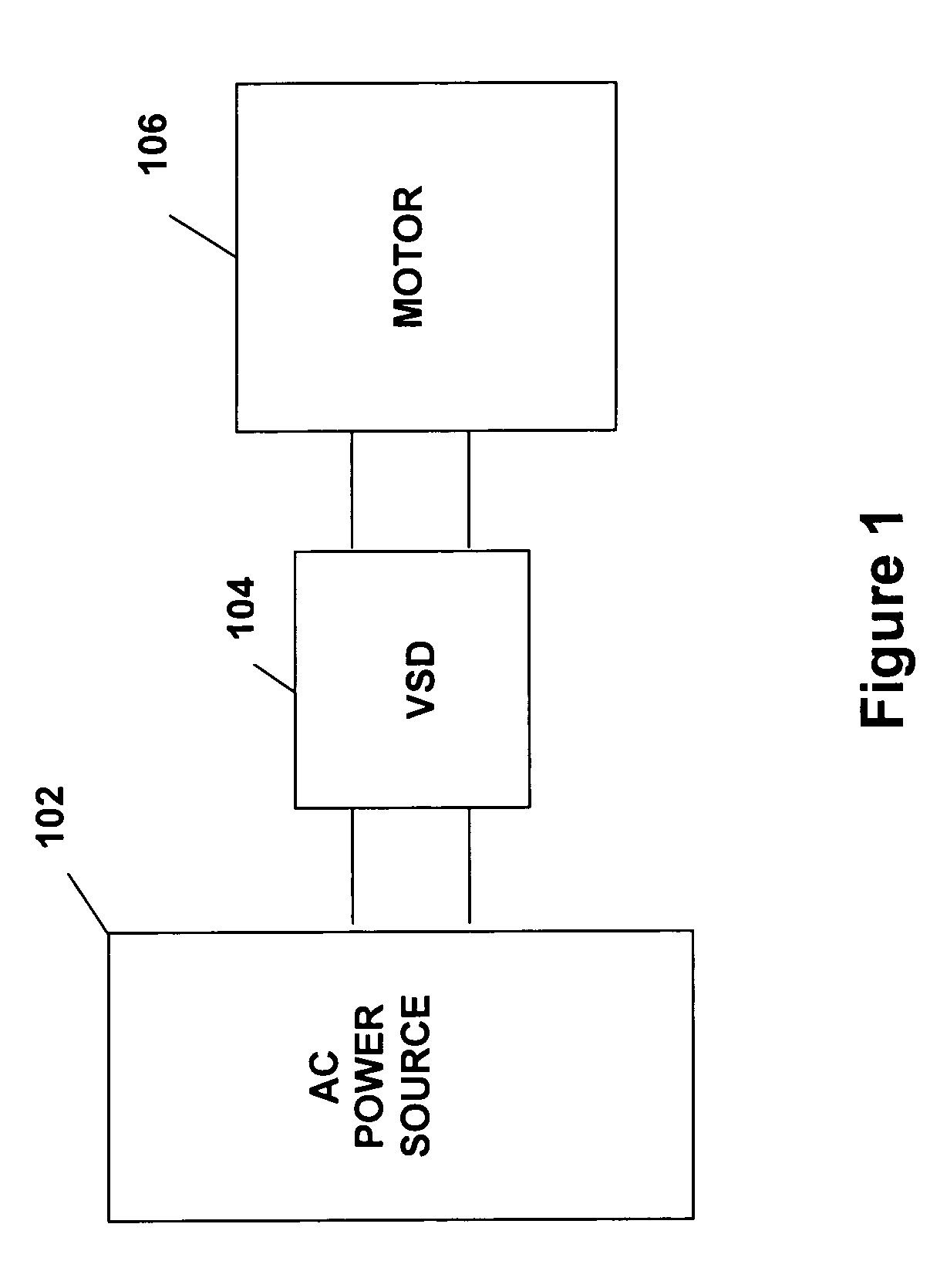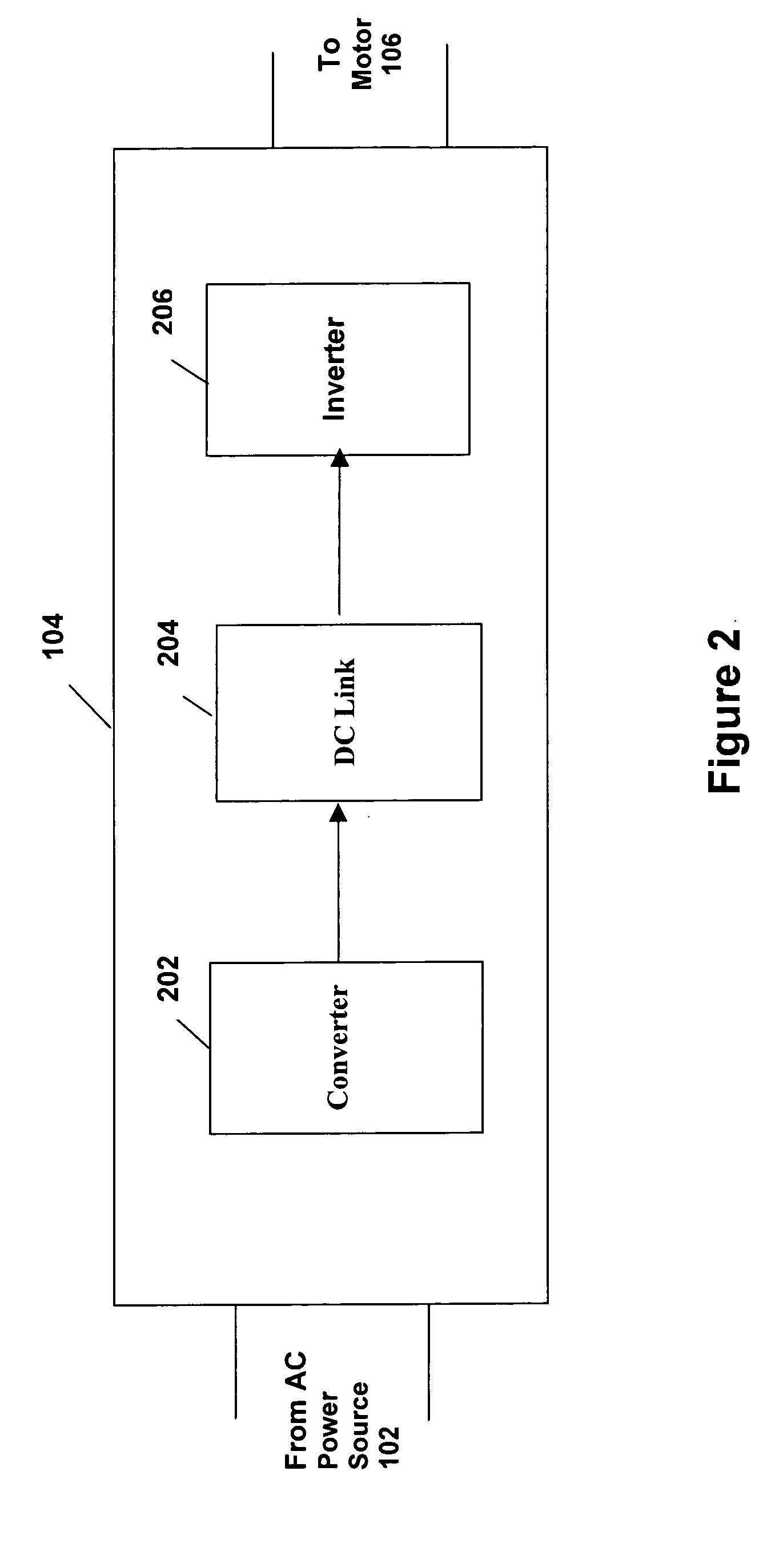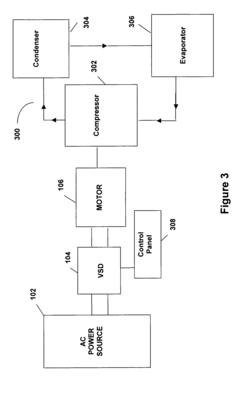Enhancing V8 Engine Power: Techniques and Methods
JUL 4, 20259 MIN READ
Generate Your Research Report Instantly with AI Agent
Patsnap Eureka helps you evaluate technical feasibility & market potential.
V8 Engine Evolution
The V8 engine, a powerful and efficient internal combustion engine design, has undergone significant evolution since its inception. Initially developed in the early 20th century, the V8 configuration quickly gained popularity due to its compact size and impressive power output. The engine's layout, with two banks of four cylinders arranged in a V-shape, allowed for a shorter overall length compared to inline configurations, making it ideal for various applications.
Throughout the decades, V8 engines have seen numerous advancements in materials, manufacturing techniques, and design principles. Early V8s were primarily constructed using cast iron, but the introduction of aluminum alloys in the 1960s led to lighter and more efficient engines. This shift in materials technology allowed for higher revving capabilities and improved thermal management.
The 1970s and 1980s saw a focus on fuel efficiency and emissions reduction, driven by stricter environmental regulations. This period witnessed the widespread adoption of electronic fuel injection systems, replacing carburetors and improving both performance and fuel economy. Additionally, the implementation of computer-controlled engine management systems enabled more precise control over ignition timing and fuel delivery.
In the 1990s and early 2000s, variable valve timing (VVT) technology became increasingly common in V8 engines. This innovation allowed for optimized engine performance across a wider range of operating conditions, enhancing both power output and fuel efficiency. Concurrently, forced induction systems, such as turbocharging and supercharging, gained prominence, enabling smaller displacement V8s to produce power levels previously associated with larger naturally aspirated engines.
Recent years have seen a renewed focus on efficiency and environmental concerns, leading to the development of cylinder deactivation systems. These systems allow V8 engines to operate on fewer cylinders under light load conditions, significantly improving fuel economy without sacrificing the ability to deliver full power when needed.
The advent of direct fuel injection technology has further enhanced V8 engine performance and efficiency. By precisely controlling fuel delivery directly into the combustion chamber, engineers have achieved improved fuel atomization, leading to more complete combustion and reduced emissions.
Looking towards the future, V8 engine evolution continues with the integration of hybrid and electric technologies. Mild hybrid systems and full hybrid powertrains are being developed to complement V8 engines, offering improved fuel efficiency and reduced emissions while maintaining the characteristic power and sound that enthusiasts appreciate.
Throughout the decades, V8 engines have seen numerous advancements in materials, manufacturing techniques, and design principles. Early V8s were primarily constructed using cast iron, but the introduction of aluminum alloys in the 1960s led to lighter and more efficient engines. This shift in materials technology allowed for higher revving capabilities and improved thermal management.
The 1970s and 1980s saw a focus on fuel efficiency and emissions reduction, driven by stricter environmental regulations. This period witnessed the widespread adoption of electronic fuel injection systems, replacing carburetors and improving both performance and fuel economy. Additionally, the implementation of computer-controlled engine management systems enabled more precise control over ignition timing and fuel delivery.
In the 1990s and early 2000s, variable valve timing (VVT) technology became increasingly common in V8 engines. This innovation allowed for optimized engine performance across a wider range of operating conditions, enhancing both power output and fuel efficiency. Concurrently, forced induction systems, such as turbocharging and supercharging, gained prominence, enabling smaller displacement V8s to produce power levels previously associated with larger naturally aspirated engines.
Recent years have seen a renewed focus on efficiency and environmental concerns, leading to the development of cylinder deactivation systems. These systems allow V8 engines to operate on fewer cylinders under light load conditions, significantly improving fuel economy without sacrificing the ability to deliver full power when needed.
The advent of direct fuel injection technology has further enhanced V8 engine performance and efficiency. By precisely controlling fuel delivery directly into the combustion chamber, engineers have achieved improved fuel atomization, leading to more complete combustion and reduced emissions.
Looking towards the future, V8 engine evolution continues with the integration of hybrid and electric technologies. Mild hybrid systems and full hybrid powertrains are being developed to complement V8 engines, offering improved fuel efficiency and reduced emissions while maintaining the characteristic power and sound that enthusiasts appreciate.
Market Demand Analysis
The market demand for enhanced V8 engine power continues to grow, driven by various factors in both consumer and industrial sectors. In the automotive industry, there is a persistent desire for high-performance vehicles, particularly in luxury and sports car segments. Consumers seek improved acceleration, higher top speeds, and overall better driving experiences, which directly correlate with increased engine power.
Racing and motorsports industries also contribute significantly to the demand for more powerful V8 engines. These sectors constantly push the boundaries of engine performance, requiring innovative techniques and methods to extract maximum power from V8 configurations. This demand not only drives technological advancements but also influences consumer expectations in the broader automotive market.
The commercial vehicle sector, including trucks and heavy-duty equipment, represents another substantial market for enhanced V8 engines. Here, the focus is on increased torque and improved fuel efficiency, alongside raw power. Industries such as construction, mining, and long-haul transportation require engines that can deliver sustained high performance under demanding conditions.
Marine applications form another crucial market segment for powerful V8 engines. Speedboats, luxury yachts, and commercial vessels all benefit from advancements in V8 engine technology, seeking improvements in speed, reliability, and fuel consumption.
Environmental regulations and the push for sustainability are reshaping market demands. While there is a trend towards electrification, a significant market segment still values the performance characteristics of V8 engines. This has led to increased demand for techniques that can enhance V8 engine power while simultaneously improving fuel efficiency and reducing emissions.
The aftermarket and tuning industry also plays a vital role in driving demand for V8 engine power enhancement techniques. Enthusiasts and professionals in this sector constantly seek new methods to boost performance, creating a robust market for innovative power enhancement solutions.
Geographically, North America and Europe remain strong markets for V8 engines, particularly in high-performance and luxury vehicle segments. However, emerging markets in Asia and the Middle East are showing increased interest in powerful V8 engines, especially in the luxury and sports car categories.
The global market size for V8 engines is substantial, with steady growth projected in the coming years. This growth is supported by ongoing technological advancements, changing consumer preferences, and the enduring appeal of V8 engines in specific vehicle categories and applications.
Racing and motorsports industries also contribute significantly to the demand for more powerful V8 engines. These sectors constantly push the boundaries of engine performance, requiring innovative techniques and methods to extract maximum power from V8 configurations. This demand not only drives technological advancements but also influences consumer expectations in the broader automotive market.
The commercial vehicle sector, including trucks and heavy-duty equipment, represents another substantial market for enhanced V8 engines. Here, the focus is on increased torque and improved fuel efficiency, alongside raw power. Industries such as construction, mining, and long-haul transportation require engines that can deliver sustained high performance under demanding conditions.
Marine applications form another crucial market segment for powerful V8 engines. Speedboats, luxury yachts, and commercial vessels all benefit from advancements in V8 engine technology, seeking improvements in speed, reliability, and fuel consumption.
Environmental regulations and the push for sustainability are reshaping market demands. While there is a trend towards electrification, a significant market segment still values the performance characteristics of V8 engines. This has led to increased demand for techniques that can enhance V8 engine power while simultaneously improving fuel efficiency and reducing emissions.
The aftermarket and tuning industry also plays a vital role in driving demand for V8 engine power enhancement techniques. Enthusiasts and professionals in this sector constantly seek new methods to boost performance, creating a robust market for innovative power enhancement solutions.
Geographically, North America and Europe remain strong markets for V8 engines, particularly in high-performance and luxury vehicle segments. However, emerging markets in Asia and the Middle East are showing increased interest in powerful V8 engines, especially in the luxury and sports car categories.
The global market size for V8 engines is substantial, with steady growth projected in the coming years. This growth is supported by ongoing technological advancements, changing consumer preferences, and the enduring appeal of V8 engines in specific vehicle categories and applications.
Technical Challenges
The enhancement of V8 engine power faces several significant technical challenges that require innovative solutions. One of the primary obstacles is the inherent trade-off between power output and fuel efficiency. As engineers strive to increase the engine's power, they must simultaneously address the potential decrease in fuel economy, which is a critical factor in today's environmentally conscious market.
Another major challenge lies in managing the increased thermal load associated with higher power outputs. V8 engines generate substantial heat during operation, and as power levels rise, so does the need for more effective cooling systems. This necessitates advancements in thermal management technologies, including improved coolant circulation, more efficient radiators, and potentially the integration of advanced materials with superior heat dissipation properties.
The quest for greater power also puts additional stress on engine components, particularly the crankshaft, connecting rods, and pistons. These parts must withstand higher forces and temperatures without compromising durability or reliability. Consequently, there is a pressing need for stronger, lighter materials and improved manufacturing techniques to create components capable of handling the increased stresses.
Emissions control presents another significant hurdle in V8 engine power enhancement. Stricter environmental regulations worldwide demand cleaner exhaust outputs, which can be at odds with the goal of increased power. Engineers must develop more sophisticated exhaust aftertreatment systems and combustion strategies to ensure compliance with emissions standards while maintaining performance gains.
The complexity of modern engine management systems also poses a challenge. As V8 engines become more powerful, the need for precise control over fuel injection, ignition timing, and valve actuation becomes increasingly critical. This requires the development of more advanced engine control units (ECUs) and sensors capable of real-time adjustments to optimize performance under varying conditions.
Lastly, the integration of forced induction systems, such as turbochargers or superchargers, while effective in boosting power, introduces additional complexities. These systems must be carefully designed to minimize lag, ensure durability, and work harmoniously with the engine's natural aspiration characteristics. The challenge lies in optimizing the forced induction system to provide a broad powerband without compromising drivability or reliability.
Another major challenge lies in managing the increased thermal load associated with higher power outputs. V8 engines generate substantial heat during operation, and as power levels rise, so does the need for more effective cooling systems. This necessitates advancements in thermal management technologies, including improved coolant circulation, more efficient radiators, and potentially the integration of advanced materials with superior heat dissipation properties.
The quest for greater power also puts additional stress on engine components, particularly the crankshaft, connecting rods, and pistons. These parts must withstand higher forces and temperatures without compromising durability or reliability. Consequently, there is a pressing need for stronger, lighter materials and improved manufacturing techniques to create components capable of handling the increased stresses.
Emissions control presents another significant hurdle in V8 engine power enhancement. Stricter environmental regulations worldwide demand cleaner exhaust outputs, which can be at odds with the goal of increased power. Engineers must develop more sophisticated exhaust aftertreatment systems and combustion strategies to ensure compliance with emissions standards while maintaining performance gains.
The complexity of modern engine management systems also poses a challenge. As V8 engines become more powerful, the need for precise control over fuel injection, ignition timing, and valve actuation becomes increasingly critical. This requires the development of more advanced engine control units (ECUs) and sensors capable of real-time adjustments to optimize performance under varying conditions.
Lastly, the integration of forced induction systems, such as turbochargers or superchargers, while effective in boosting power, introduces additional complexities. These systems must be carefully designed to minimize lag, ensure durability, and work harmoniously with the engine's natural aspiration characteristics. The challenge lies in optimizing the forced induction system to provide a broad powerband without compromising drivability or reliability.
Current Enhancement
01 V8 Engine Design Optimization
Improvements in V8 engine design focus on enhancing power output through optimized cylinder configurations, advanced valve systems, and refined combustion chamber geometries. These design modifications aim to increase fuel efficiency, reduce emissions, and maximize overall engine performance.- Cylinder configuration and design: V8 engine power can be enhanced through optimized cylinder configuration and design. This includes improvements in cylinder head geometry, valve arrangement, and combustion chamber design to increase efficiency and power output.
- Fuel injection and combustion optimization: Advanced fuel injection systems and combustion optimization techniques can significantly boost V8 engine power. This involves precise fuel delivery, improved atomization, and enhanced mixture formation for more efficient combustion and increased power output.
- Turbocharging and supercharging: Forced induction methods such as turbocharging and supercharging can dramatically increase V8 engine power by compressing the intake air, allowing for more fuel to be burned and generating higher power output.
- Variable valve timing and lift: Implementing variable valve timing and lift systems in V8 engines can optimize power delivery across different engine speeds. This technology allows for better control of air intake and exhaust, resulting in improved performance and efficiency.
- Engine management and electronic control: Advanced engine management systems and electronic control units can fine-tune various engine parameters to maximize V8 engine power. This includes optimizing ignition timing, air-fuel ratios, and other performance-related factors in real-time.
02 Turbocharging and Supercharging Systems
Implementation of forced induction systems, such as turbochargers and superchargers, significantly boosts V8 engine power. These systems increase air intake, allowing for more fuel combustion and resulting in higher power output while maintaining or improving fuel efficiency.Expand Specific Solutions03 Electronic Engine Management
Advanced electronic control units (ECUs) and engine management systems optimize V8 engine performance by precisely controlling fuel injection, ignition timing, and valve operation. These systems adapt to various driving conditions, enhancing power delivery and efficiency across different rpm ranges.Expand Specific Solutions04 Lightweight Materials and Construction
Utilization of lightweight materials such as aluminum alloys and carbon fiber in engine components reduces overall engine weight. This weight reduction improves power-to-weight ratio, leading to enhanced acceleration and overall performance of V8-powered vehicles.Expand Specific Solutions05 Variable Valve Timing and Lift
Implementation of variable valve timing and lift technologies allows for dynamic adjustment of valve operation based on engine speed and load. This technology optimizes air intake and exhaust flow, resulting in improved power output, torque, and fuel efficiency across the entire rpm range of V8 engines.Expand Specific Solutions
Key Industry Players
The V8 engine power enhancement market is in a mature stage, with established players and ongoing innovation. The global market size for high-performance engines is substantial, driven by demand in automotive, marine, and industrial sectors. Technologically, advancements focus on improving efficiency, power output, and emissions control. Key players like Ford Global Technologies, GM Global Technology Operations, and Cummins are at the forefront, leveraging their extensive R&D capabilities. Other significant contributors include Honda Motor, Hyundai Motor, and Weichai Power, each bringing unique expertise to the field. The competitive landscape is characterized by a mix of traditional automotive giants and specialized engine manufacturers, all striving to push the boundaries of V8 engine performance.
Ford Global Technologies LLC
Technical Solution: Ford has developed advanced EcoBoost technology for V8 engines, incorporating direct fuel injection, turbocharging, and variable valve timing. This system optimizes fuel efficiency while maintaining high power output. Ford's latest V8 engines feature a dual-injection system, combining port and direct injection for improved performance across the RPM range[1]. They've also implemented cylinder deactivation technology, allowing the engine to run on four cylinders during light load conditions, significantly improving fuel economy[2]. Ford's plasma transferred wire arc (PTWA) coating technology reduces friction and wear in cylinder bores, enhancing engine durability and efficiency[3].
Strengths: High power-to-efficiency ratio, advanced fuel injection systems, and innovative friction reduction technologies. Weaknesses: Complexity of systems may lead to higher maintenance costs, and the focus on turbocharging might sacrifice some of the traditional V8 sound characteristics valued by enthusiasts.
GM Global Technology Operations LLC
Technical Solution: GM has focused on enhancing V8 engine power through its Dynamic Fuel Management (DFM) system, which can deactivate up to seven cylinders for improved efficiency[4]. Their latest V8 engines incorporate direct injection, variable valve timing, and Active Fuel Management. GM has also developed a new combustion system design that optimizes the fuel-air mixture for better performance and efficiency. The company's V8 engines now feature a higher compression ratio, typically around 11.5:1, to extract more power from each combustion cycle[5]. Additionally, GM has implemented advanced thermal management systems to maintain optimal operating temperatures, enhancing both performance and longevity[6].
Strengths: Highly advanced cylinder deactivation technology, optimized combustion systems, and effective thermal management. Weaknesses: The complexity of the DFM system may lead to increased production costs and potential reliability concerns in the long term.
Core Innovations
Adaptive state of charge regulation and control of variable speed hybrid electric supercharger assembly for efficient vehicle operation
PatentInactiveUS20190040808A1
Innovation
- A method for regulating the state of charge of an energy storage device in a supercharger assembly by monitoring driving characteristics, determining a reference state of charge, and selecting an operating mode to regenerate the device, using a planetary gearing arrangement and an electric motor-generator to adjust boost pressure and torque, and controlling the bypass valve and throttle to optimize air flow.
System and method for increasing output horsepower and efficiency in a motor
PatentInactiveUS7075268B2
Innovation
- Operating an induction motor with a variable speed drive that supplies a voltage and frequency greater than the motor's rated values, allowing operation in constant flux or constant volts/Hz mode, thereby increasing output horsepower and efficiency by maintaining relatively constant current and motor losses.
Environmental Impact
The environmental impact of enhancing V8 engine power is a critical consideration in the automotive industry. As power output increases, so does the potential for increased emissions and fuel consumption. However, advancements in engine technology have led to more efficient and cleaner V8 engines, mitigating some of these concerns.
One of the primary environmental challenges associated with V8 engine power enhancement is the increase in carbon dioxide (CO2) emissions. Higher power output typically requires more fuel combustion, resulting in greater CO2 release. This contributes to greenhouse gas accumulation and climate change. To address this issue, manufacturers have implemented various technologies such as direct fuel injection, variable valve timing, and cylinder deactivation, which improve fuel efficiency and reduce emissions while maintaining or enhancing power output.
Nitrogen oxide (NOx) emissions are another significant environmental concern for V8 engines. These emissions contribute to air pollution and can form smog and acid rain. Advanced exhaust gas recirculation (EGR) systems and selective catalytic reduction (SCR) technology have been developed to reduce NOx emissions in high-performance V8 engines. These systems work by lowering combustion temperatures and chemically treating exhaust gases to convert NOx into harmless nitrogen and water.
Particulate matter emissions, particularly from diesel V8 engines, have also been a focus of environmental efforts. Diesel particulate filters (DPF) and advanced fuel injection systems have been implemented to capture and reduce these harmful particles, significantly improving air quality around vehicles equipped with V8 engines.
The use of alternative fuels and hybrid technologies in V8 engines has further reduced their environmental impact. Flex-fuel V8 engines capable of running on ethanol blends or biodiesel have been developed, offering lower carbon emissions. Additionally, hybrid V8 powertrains that combine electric motors with traditional combustion engines have emerged, providing improved fuel economy and reduced emissions during city driving.
Material selection and manufacturing processes for V8 engines have also evolved to minimize environmental impact. Lightweight materials such as aluminum alloys and carbon fiber composites are increasingly used in engine construction, reducing overall vehicle weight and improving fuel efficiency. Moreover, advancements in manufacturing techniques have led to more precise machining and assembly processes, resulting in engines with tighter tolerances and reduced friction, further enhancing efficiency and reducing waste.
As environmental regulations become more stringent globally, the development of V8 engine power enhancement techniques continues to prioritize eco-friendly solutions. This includes research into advanced combustion strategies, such as homogeneous charge compression ignition (HCCI), which promises significant reductions in both fuel consumption and emissions while maintaining high power output.
One of the primary environmental challenges associated with V8 engine power enhancement is the increase in carbon dioxide (CO2) emissions. Higher power output typically requires more fuel combustion, resulting in greater CO2 release. This contributes to greenhouse gas accumulation and climate change. To address this issue, manufacturers have implemented various technologies such as direct fuel injection, variable valve timing, and cylinder deactivation, which improve fuel efficiency and reduce emissions while maintaining or enhancing power output.
Nitrogen oxide (NOx) emissions are another significant environmental concern for V8 engines. These emissions contribute to air pollution and can form smog and acid rain. Advanced exhaust gas recirculation (EGR) systems and selective catalytic reduction (SCR) technology have been developed to reduce NOx emissions in high-performance V8 engines. These systems work by lowering combustion temperatures and chemically treating exhaust gases to convert NOx into harmless nitrogen and water.
Particulate matter emissions, particularly from diesel V8 engines, have also been a focus of environmental efforts. Diesel particulate filters (DPF) and advanced fuel injection systems have been implemented to capture and reduce these harmful particles, significantly improving air quality around vehicles equipped with V8 engines.
The use of alternative fuels and hybrid technologies in V8 engines has further reduced their environmental impact. Flex-fuel V8 engines capable of running on ethanol blends or biodiesel have been developed, offering lower carbon emissions. Additionally, hybrid V8 powertrains that combine electric motors with traditional combustion engines have emerged, providing improved fuel economy and reduced emissions during city driving.
Material selection and manufacturing processes for V8 engines have also evolved to minimize environmental impact. Lightweight materials such as aluminum alloys and carbon fiber composites are increasingly used in engine construction, reducing overall vehicle weight and improving fuel efficiency. Moreover, advancements in manufacturing techniques have led to more precise machining and assembly processes, resulting in engines with tighter tolerances and reduced friction, further enhancing efficiency and reducing waste.
As environmental regulations become more stringent globally, the development of V8 engine power enhancement techniques continues to prioritize eco-friendly solutions. This includes research into advanced combustion strategies, such as homogeneous charge compression ignition (HCCI), which promises significant reductions in both fuel consumption and emissions while maintaining high power output.
Performance Testing
Performance testing is a critical aspect of enhancing V8 engine power. It involves a systematic approach to evaluating the engine's output, efficiency, and overall performance under various conditions. The primary objective is to quantify improvements and identify areas for further optimization.
A comprehensive performance testing regimen typically begins with baseline measurements of the stock V8 engine. This includes dynamometer tests to measure horsepower and torque across the entire RPM range. Fuel consumption rates are also recorded to assess efficiency. These baseline figures serve as a reference point for all subsequent modifications and enhancements.
As power-enhancing techniques are applied, such as upgrading the intake and exhaust systems, modifying the camshaft profile, or increasing compression ratios, each change is followed by a new round of performance tests. This iterative process allows engineers to isolate the effects of individual modifications and quantify their impact on engine performance.
Advanced testing methods may include thermal imaging to analyze heat distribution and identify potential hotspots that could limit performance. Pressure sensors are often employed to monitor combustion chamber pressures, providing insights into the effectiveness of fuel mixture and ignition timing adjustments.
Durability testing is another crucial component of the performance evaluation process. Engines are subjected to prolonged periods of high-stress operation to ensure that power gains do not come at the expense of reliability. This may involve endurance runs on engine dynamometers or real-world testing in vehicles under extreme conditions.
Emissions testing is increasingly important in the context of modern V8 engine development. As power output increases, it is essential to verify that the engine still meets regulatory standards for exhaust emissions. This often requires a delicate balance between performance enhancements and emissions control technologies.
Data logging and analysis play a vital role in performance testing. Advanced telemetry systems capture a wide array of parameters in real-time, including air-fuel ratios, ignition timing, exhaust gas temperatures, and more. This wealth of data allows engineers to fine-tune engine management systems for optimal performance across all operating conditions.
Comparative testing against competitor engines is often conducted to benchmark performance and identify areas where the V8 engine excels or needs improvement. This competitive analysis helps drive innovation and ensures that power enhancement efforts are aligned with market demands and industry trends.
A comprehensive performance testing regimen typically begins with baseline measurements of the stock V8 engine. This includes dynamometer tests to measure horsepower and torque across the entire RPM range. Fuel consumption rates are also recorded to assess efficiency. These baseline figures serve as a reference point for all subsequent modifications and enhancements.
As power-enhancing techniques are applied, such as upgrading the intake and exhaust systems, modifying the camshaft profile, or increasing compression ratios, each change is followed by a new round of performance tests. This iterative process allows engineers to isolate the effects of individual modifications and quantify their impact on engine performance.
Advanced testing methods may include thermal imaging to analyze heat distribution and identify potential hotspots that could limit performance. Pressure sensors are often employed to monitor combustion chamber pressures, providing insights into the effectiveness of fuel mixture and ignition timing adjustments.
Durability testing is another crucial component of the performance evaluation process. Engines are subjected to prolonged periods of high-stress operation to ensure that power gains do not come at the expense of reliability. This may involve endurance runs on engine dynamometers or real-world testing in vehicles under extreme conditions.
Emissions testing is increasingly important in the context of modern V8 engine development. As power output increases, it is essential to verify that the engine still meets regulatory standards for exhaust emissions. This often requires a delicate balance between performance enhancements and emissions control technologies.
Data logging and analysis play a vital role in performance testing. Advanced telemetry systems capture a wide array of parameters in real-time, including air-fuel ratios, ignition timing, exhaust gas temperatures, and more. This wealth of data allows engineers to fine-tune engine management systems for optimal performance across all operating conditions.
Comparative testing against competitor engines is often conducted to benchmark performance and identify areas where the V8 engine excels or needs improvement. This competitive analysis helps drive innovation and ensures that power enhancement efforts are aligned with market demands and industry trends.
Unlock deeper insights with Patsnap Eureka Quick Research — get a full tech report to explore trends and direct your research. Try now!
Generate Your Research Report Instantly with AI Agent
Supercharge your innovation with Patsnap Eureka AI Agent Platform!
